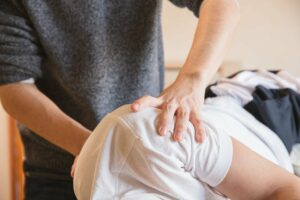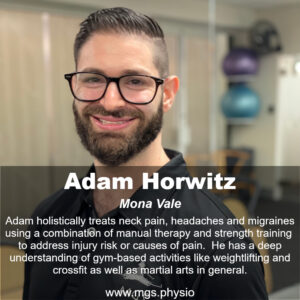
Shoulder pain is one of the most common muscle and joint complaints that Physiotherapists and GP’s see. There are quite a lot of specific issues related to the shoulder and although some of the clinical tests that a clinician can perform can inform us what areas or structures may be involved, they are not always 100% full proof. The same can be said for imaging, such as ultrasounds or MRIs. A very large number of people with no shoulder pain and with shoulder pain will have findings on scans such as rotator cuff tendinopathy, labral tears and bursitis. It is therefore important if you have shoulder pain and have already been referred for imaging to have a well trained clinician assess you, your movements and strength deficits to decipher what imaging findings are relevant to you specifically. Most of these injuries, however, do not require imaging initially and you can commence your rehab immediately at your first Physiotherapy appointment.
There are a few terms often used these days such as, “Rotator Cuff Related Shoulder Pain (RCRSP)” and “Subacromial Pain Syndrome (SIS)”. These are umbrella terms that are used to describe some common shoulder pain conditions as commonly with injuries there is often not one single structure involved. Once you are provided with this diagnosis your rehab can commence.
The most important components of rehabilitation include:
- Education. Ensuring understanding of the condition. This can help to alleviate aggravating factors and lead to improved adherence of the rehab program.
- Load management. This concept involves manipulating variables like the amount or type of exercise you are currently doing, your work activities or daily postures that may be providing a suboptimal type of chronic load to the structures of the shoulder.
- Optimal Loading. So now that the aggravating factors are better understood, we need to start loading the tissues in the shoulder in a helpful way using specific exercises to assist in the healing process. Exercise helps by a process called mechanotransduction. This is where a mechanical stimulus, like exercise, is converted into biochemical signals in the cell that lead to adaptive changes, aiding in tissue repair. This will in turn lead to improvements in strength, tissue capacity and will help to control inflammation.
Other aspects that should also be considered are areas of general health like, improving sleep duration and quality as well as optimising your nutrition. These will aid in creating the best environment possible to reduce inflammation and fuel your body to heal.
Manual therapy, such as soft tissue massage and dry needling can help to treat the symptoms of these injuries by reducing tension around the affected area and reducing sensitivity of the nervous system. This will lead to reduced pain and improved movement ability that will ultimately enhance your recovery.
If you have injured your shoulder or started to notice a pesky niggle, consider it a sign to pop in to MGS Physiotherapy for a helping hand!
 Author – Adam Horwitz (Mona Vale)
Author – Adam Horwitz (Mona Vale)
Adam is interested in holistically treating neck pain, headaches and migraines. He likes to use manual therapy in combination with strength training to address any deficits that may be contributing to injury risk or causing a person’s pain.
Adam likes going go to the gym and training in Brazilian Ju-jitsu. From these he has a deep understanding of gym-based activities like weightlifting and crossfit as well as martial arts in general.
Click here to learn more about Adam.
